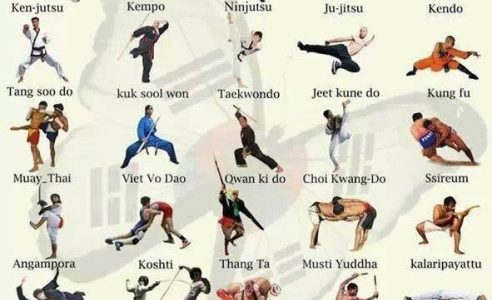The Development And Development Of Martial Arts: Tracing Its Origins From Ancient Times To Contemporary Practices
The Development And Development Of Martial Arts: Tracing Its Origins From Ancient Times To Contemporary Practices
Blog Article
Short Article Created By-Bonner Sommer
Step into the world of martial arts, where old origins and modern methods collide in an exhilarating journey of technique and self-discovery.
As martial arts punching board delve into the background and evolution of this exciting art kind, prepare to be captivated by the cultural impacts, technological advancements, and extensive approach that have actually formed it over centuries.
From the battlefields of old people to the training premises of today, martial arts have stood the test of time, regularly adjusting and growing.
Each strike, each movement, carries with it the weight of many years of custom and wisdom, gave via generations. how young can kids start martial arts is a tale of durability, of warriors who sought not only physical expertise, yet likewise inner strength and harmony.
Join martial arts gi on this impressive exploration as we reveal the tricks, the legends, and the transformational power of martial arts.
Get Highly recommended Webpage to be inspired, challenged, and permanently transformed by the history and advancement of martial arts.
Social Impacts on Martial Arts
As you explore the background and advancement of martial arts, you'll promptly find the remarkable ways in which social influences have shaped these battle strategies.
From the old civilizations of China and India to the more recent growths in Japan and Brazil, martial arts have actually been heavily affected by the cultures in which they originated.
For instance, Chinese martial arts, such as Martial Art and Tai Chi, are deeply rooted in the approach of Taoism and the idea of Yin and Yang.
In contrast, Japanese martial arts, like Karate and Judo, show the samurai warrior customs and the values of discipline and honor.
In a similar way, Brazilian fighting style, Capoeira, integrates elements of African dancing and music, mirroring the cultural heritage of African slaves in Brazil.
These social influences not only give each martial art its distinct attributes but additionally give a deeper understanding of the historic and social contexts in which they progressed.
Technological Improvements and Martial Arts
With the rise of advanced weapons and ingenious training devices, you have actually had the ability to boost your abilities and adapt to the ever-changing fight landscape.
Technological advancements have reinvented the means martial arts are practiced and shown. Virtual reality simulations now permit you to train in reasonable combat circumstances without the risk of physical harm. High-speed cams capture every move, enabling you to evaluate and perfect your strategies. Wearable tools check your heart rate, breathing, and muscle mass activation, providing immediate feedback on your efficiency.
In addition, the development of specific devices, such as resistance bands and dexterity ladders, has actually allowed you to enhance your speed, toughness, and dexterity. These technological advancements have not only made training more effective yet have actually also pressed the limits of what is possible in martial arts, enabling you to get to new heights in your technique.
The Philosophy and Principles of Martial Arts
The ideology and concepts of martial arts are deeply rooted in shaping your frame of mind and instilling discipline, focus, and regard in your method.
1. Attitude: Martial Arts teaches you to create a strong and resistant frame of mind. It allows you to conquer obstacles both on and off the mat, pushing your restrictions and persevering when faced with misfortune.
2. Discipline: Martial Arts demands self-control and self-discipline. Through routine training and adherence to strict rules and strategies, you find out to control your impulses and establish a strong work values.
3. Focus: Martial Arts requires extreme emphasis and concentration. By training your mind to be existing in the moment, you enhance your capability to respond rapidly and successfully throughout battle scenarios.
4. Respect: Martial Arts highlights respect for oneself, instructors, educating companions, and challengers. It teaches you to value the abilities and experiences of others, cultivating a feeling of camaraderie and sportsmanship.
Conclusion
Congratulations on finishing your trip via the captivating globe of martial arts! Throughout this exploration, you have seen the rich background and impressive evolution of these fight techniques.
From their old beginnings to the modern strategies we see today, martial arts have actually been shaped by cultural influences.
The combination of technology has likewise played a significant role in reinventing the method martial arts are educated and exercised in today day.
Nevertheless, it is very important to keep in mind that martial arts are greater than simply physical battle. They include extensive ideologies and directing concepts that surpass the mere act of fighting.
Take a minute to assess this obsolete experience and appreciate just how the tradition of martial arts remains to grow in today, transcending time and limits.
